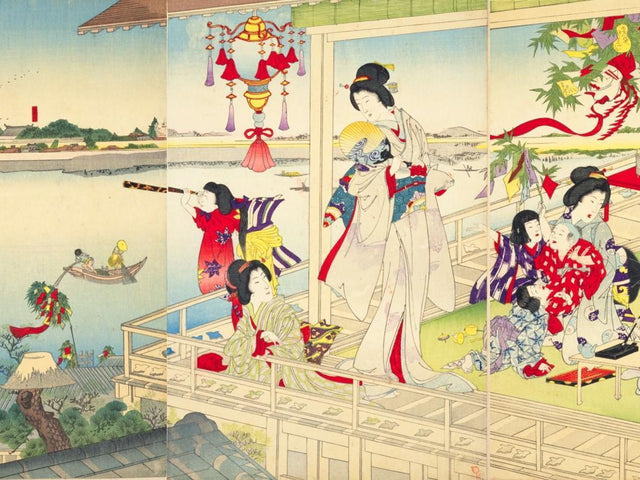
Japanese Calendar: 7月 - 文月 (Fumizuki)
By Nozomi Yokoyama |Origins of "Fumizuki"
Historically, the term "文 / fumi" referred to books. A tradition on the night of July 7th, during the Tanabata festival, involved opening books and exposing them to the night air, believed to enhance one’s writing skills. This custom is thought to be the reason why the month is called "Fumizuki."
There are however alternative theories regarding the name "Fumizuki." One popular belief is tied to the agricultural season. As July is when rice ears begin to swell, the names "Homizuki (穂見月)" or "Hofumizuki (穂含月)," meaning "the month of swelling rice ears," could have evolved into "Fumizuki."
The Tanabata Festival
A key event in July is the Tanabata (七夕) festival, celebrated on July 7th. According to the most popular story taught to Japanese children, Tanabata is the night when Orihime (the star Vega) and Hikoboshi (the star Altair) cross the Milky Way to reunite, a meeting that happens only once a year on this date.
During the Tanabata festival, people write their wishes on colorful strips of paper and hang them on bamboo branches, hoping for their dreams to come true.
The legend of Orihime and Hikoboshi is deeply intertwined with star lore. Orihime, represented by the star Vega (Shukujo), is linked to weaving, while Hikoboshi, represented by the star Altair (Kengyu), is associated with agriculture. These stars shine brightly across the Milky Way on the seventh day of the seventh month, inspiring the story of their yearly reunion, a tale that originated in China.



